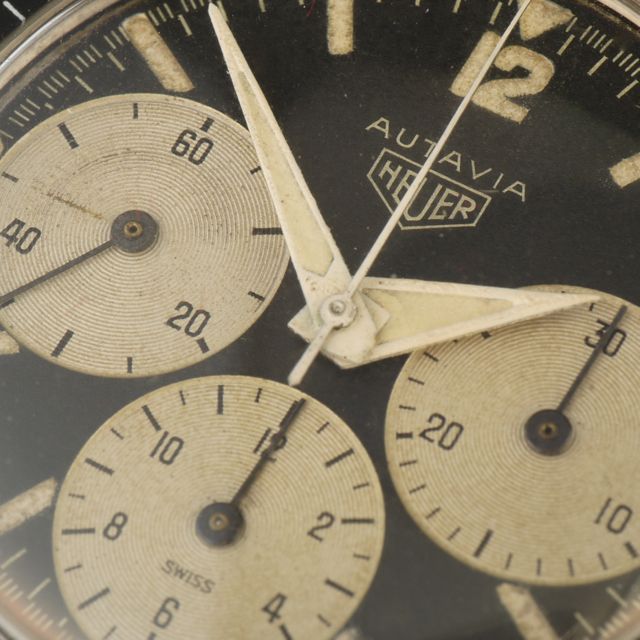
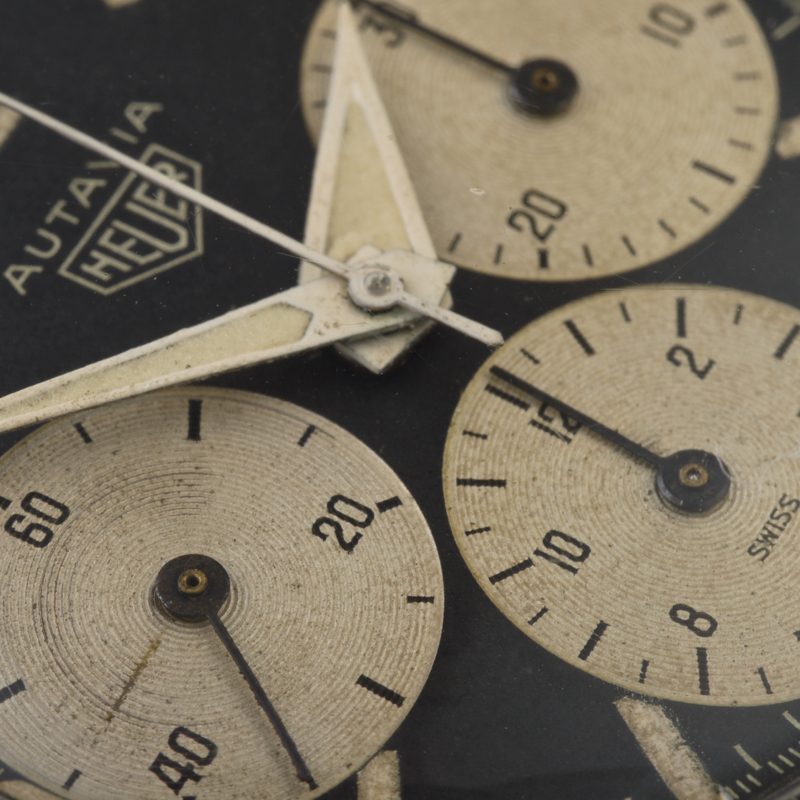
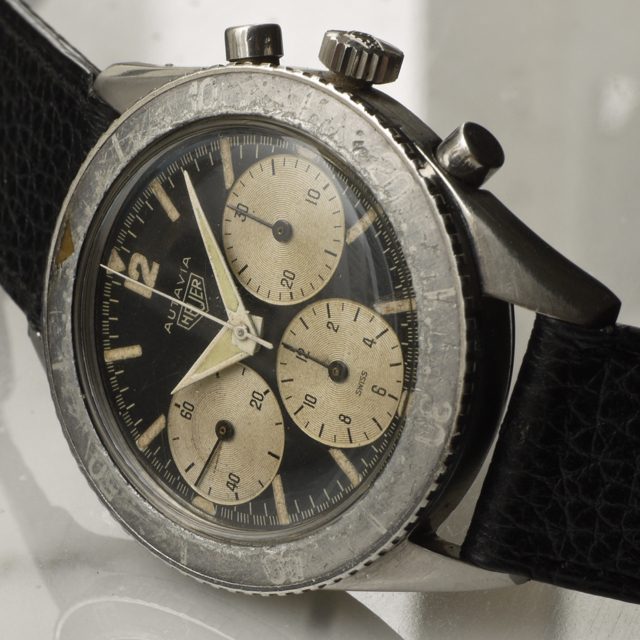
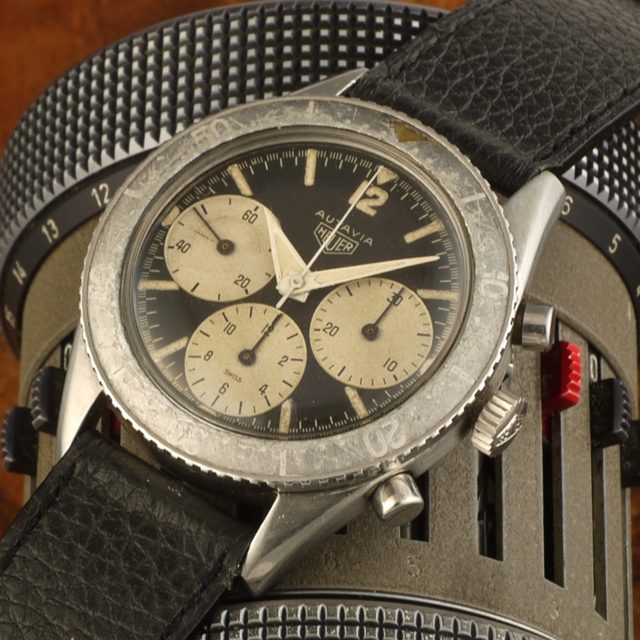
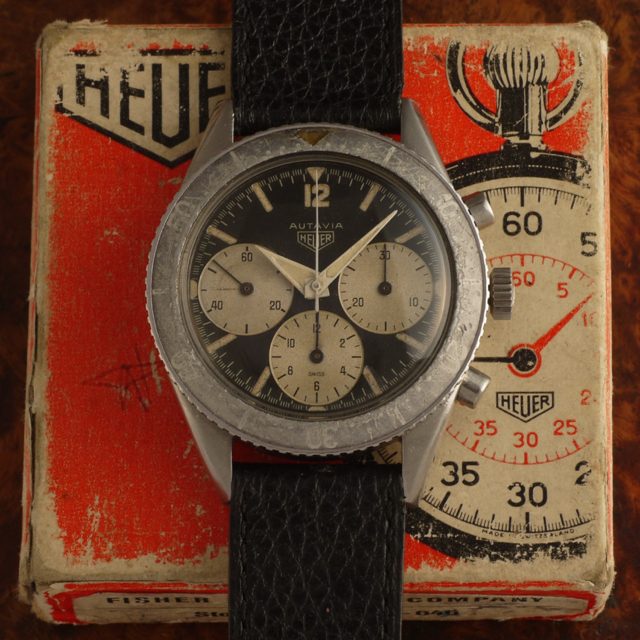
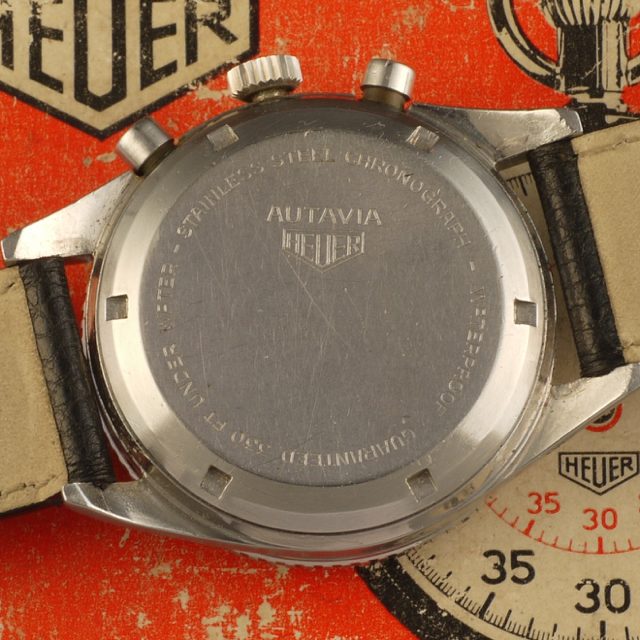
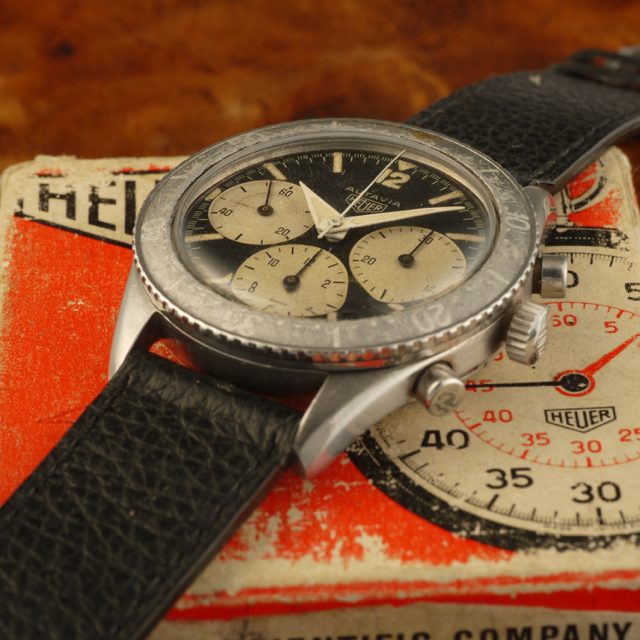
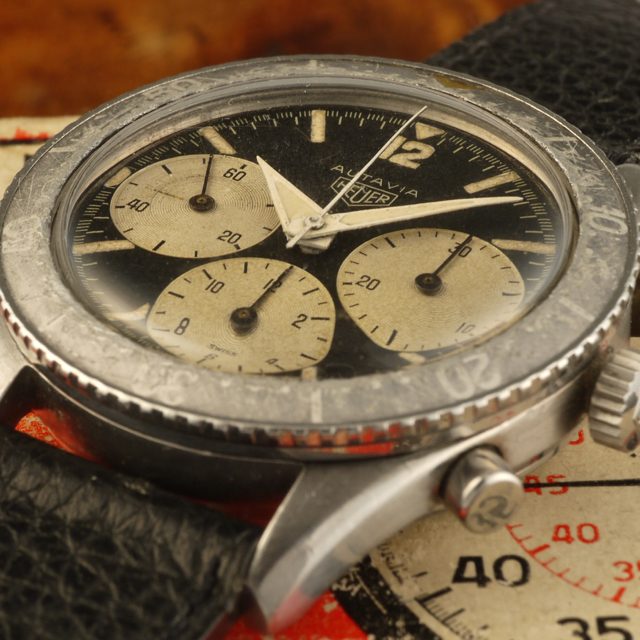
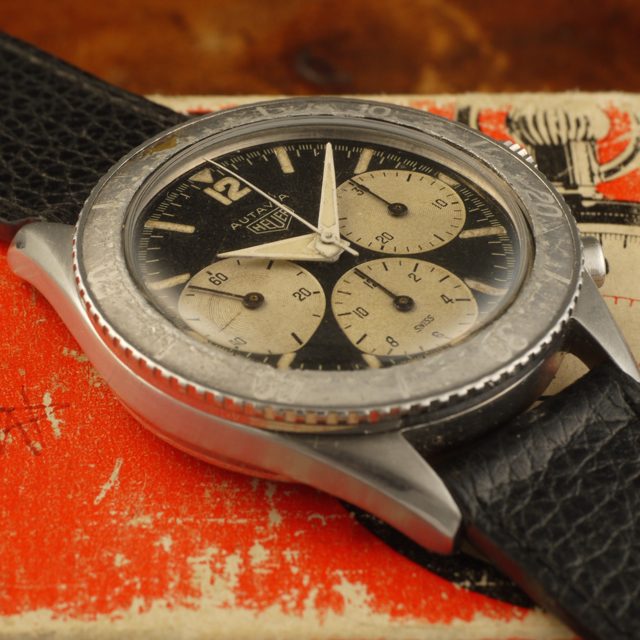
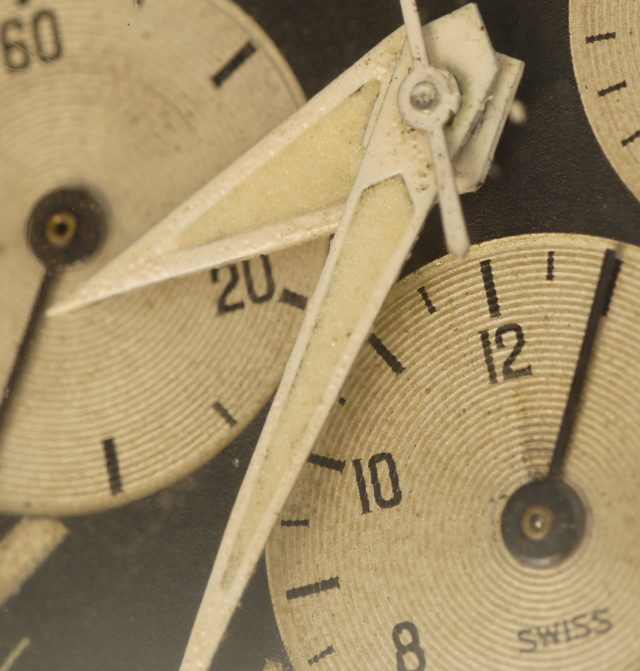
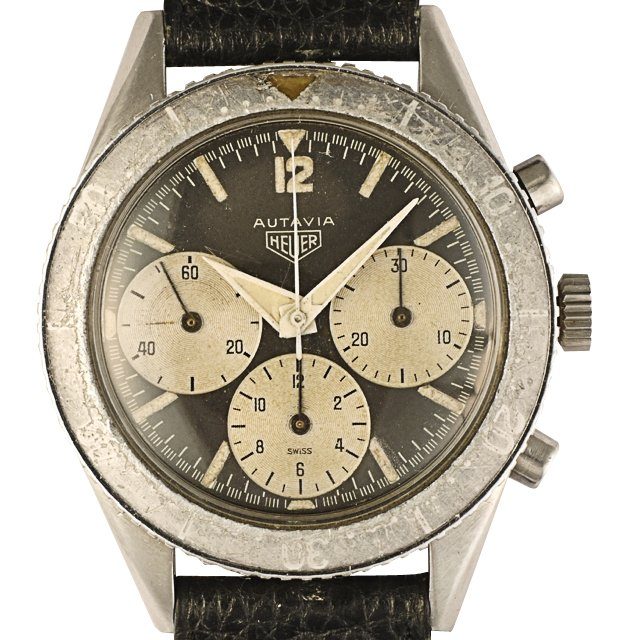
Heuer Autavia
Nation of Israel proclaimed; British end Mandate at midnight; Arab armies attack1963 Heuer Autavia ref. 2446 M, very rare Heuer Autavia, Delphine hands, Valjoux 72 movement, 38mm. case.
The first Autavias were dashboard clocks and instrumentation used in automobiles and aircraft, and Heuer recycled the name in the 1960s and applied it to their line of professional racing chronographs. The name “Autavia” comes from a combination of two words: Automotive & Aviation, they are the archetype of the 60s and 70s Motorsports watches. They have large cases, handsome dials, and excellent movements. During the golden age of automobile racing, a chronograph watch was an essential piece of kit, and many of the racing greats had a Heuer strapped to their wrist.
Values for early Heuer chronographs (particularly manually-winding Autavia models) are on the rise, and clean, original examples are getting hard to come by.
The Valjoux 72 is a three register column-wheel manual wind chronograph movement that traces its origins back to the 1930s. The V72 was used in the Daytona Paul Newman and many other high-end watches, but also in some lesser-known brands; expect to pay a premium price for watches with this rare and celebrated movement.
Alone, it is worth more them US$500, often used as spare parts for more expensive watches, and I go further, an unmarked Valjoux 72 can be signed and turned into a Rolex, Breitling, Heuer, Jaeger, and others, so be careful with identification.
It all started in 1860, with Edouard Heuer setting up a workshop in Bernese, a predominantly French-speaking area of Switzerland close to the French border, a small town even now with a population under 5000. However, it is no stranger to watch companies, having also been where Breitling was founded and has been home to Longines. Of course, those companies were artisan workshops producing small numbers of mostly silver cased pocket watches.
In 1914 Heuer made the first wristwatch for men, they used pocket-watch movements and reflected demand for wristwatches that would only increase during the First World War and after.
1920 was the first time in 8 years that an Olympic Games had been held, following the cancellation of the 1916 Berlin events. Heuer had some prominence as a sports timing company by this point and was pleased to be selected as the official timer of the Antwerp games. This was subsequently extended to the 1924 games in Paris and 1928 in Amsterdam: this cemented the brand marriage between timing and sports.
For today’s collectors, the heyday for Heuer really began in the mid-1930s. I think that’s also probably true for many other brands. Heuer began making pilots chronographs in 35. These were used by Air Force pilots primarily, a lot of them in the German Air Force. For most Heuer collectors, these pilot chronographs from around 1935 are the first real survivors that regularly can be found on the market today.
In the 1960s and 1970s, no brand was more prominent in motorsports timing than Heuer.
